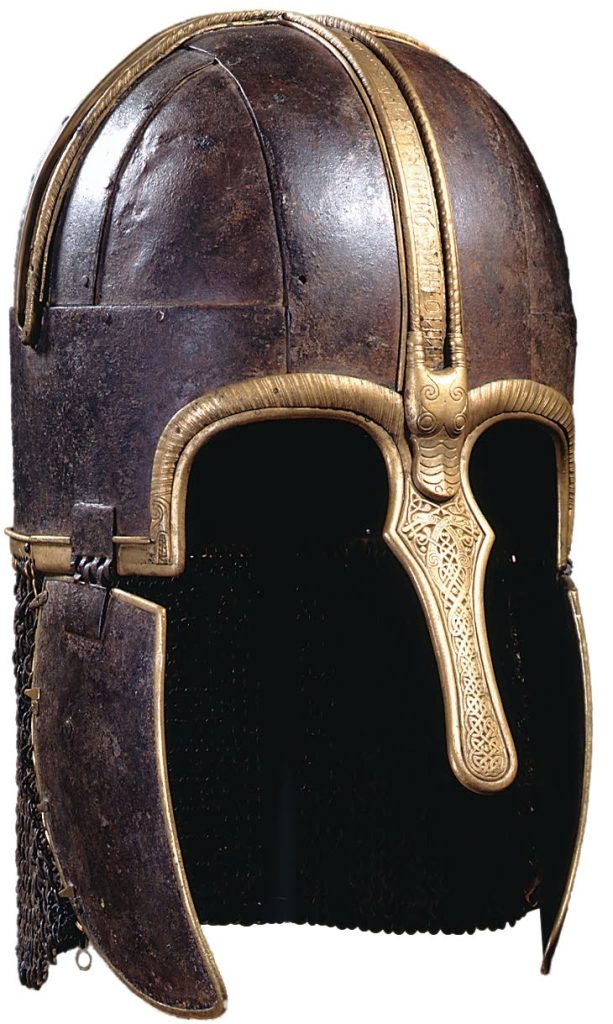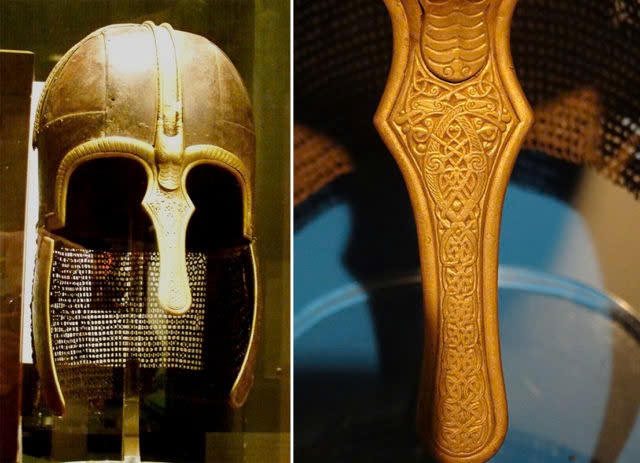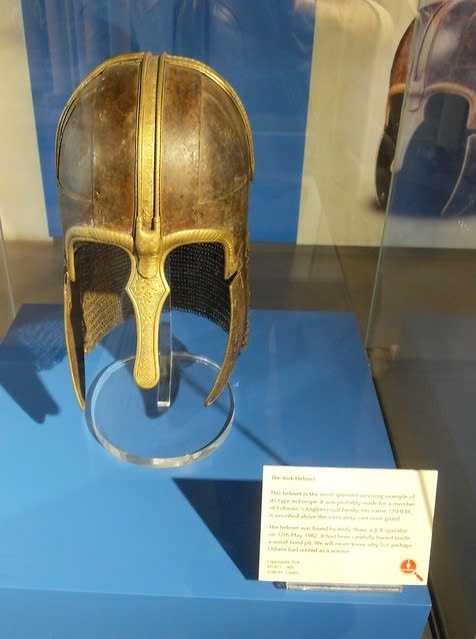In the heart of York, England, a groundbreaking discovery took place in May 1982. During an archaeological excavation at Coppergate, workers stumbled upon an extraordinary artifact that would leave historians and history enthusiasts alike spellbound for decades—the remarkable Coppergate helmet. This find was not merely a piece of ancient armor but a treasure trove of cultural and historical significance, offering a rare glimpse into the lives and craftsmanship of the Anglo-Saxons.
This magnificent helmet, an Anglo-Saxon masterpiece, dates back to AD 750–775. Hidden beneath the remnants of a brick chimney, it was unearthed after centuries of slumber. Despite the passage of time, the helmet’s brass decorations bore clear signs of wear, suggesting a long history of use before it was carefully buried. Even more fascinating were the subtle traces of battle damage etched onto its surface, silently narrating a story of skirmishes and adventures that unfolded before it found its final resting place.

The Coppergate helmet is a shining example of the exceptional skills and artistry of Anglo-Saxon metalworkers. Crafted from iron, it features two sturdy cheek-plates and a remarkably well-preserved mail curtain that would have offered vital protection in combat. Among its most distinctive features is a prominent nose-guard, a striking addition that, along with the eyebrows, is embellished with intricate brass ornamentation. This attention to detail not only demonstrates the technical proficiency of the helmet’s creators but also underscores the importance of aesthetics and symbolism in Anglo-Saxon armor design.
What sets the Coppergate helmet apart is its ingenious structural framework, a marvel of ancient engineering. It is composed of four main elements: an iron band encircling the wearer’s head, a brow band that forms the base, a riveted band running from the front to the back over the crown, and two shorter bands stretching across the ears. Between these bands, triangular iron plates were expertly inserted, creating a balanced and visually captivating design. This sophisticated construction not only ensured the helmet’s durability but also reflected the high level of craftsmanship that defined this era.
Perhaps the most captivating feature of the Coppergate helmet is the Latin inscription that adorns its brass strips. The text begins with a clear invocation, “In the name of our Lord Jesus Christ, the Holy Spirit, and God [the Father],” but the latter part of the inscription has puzzled scholars for decades. Interpretations vary widely, with some suggesting it serves as a prayer for divine protection, while others speculate that it could be a reference to an individual, possibly named Oshere. This enigmatic inscription offers a tantalizing glimpse into the spiritual and cultural beliefs of the Anglo-Saxons, showcasing their reverence for faith and the divine.
The helmet is more than just a relic of war; it serves as a window into the spiritual and cultural practices of its time. The meticulous care with which it was crafted and later interred suggests a profound connection between the material and the sacred. In Anglo-Saxon society, objects like this helmet were not merely functional; they were imbued with spiritual significance, reflecting a worldview in which the divine played an integral role in daily life and warfare.

Today, the Coppergate helmet is proudly displayed at the Castle Museum in York, where it continues to captivate visitors from around the world. As they stand before this extraordinary artifact, they are transported back in time, gaining a deeper appreciation for the rich cultural heritage that lies beneath the surface of modern cities. The helmet serves as a tangible link to a bygone era, a testament to the ingenuity, faith, and resilience of the people who created and used it.
As we study and celebrate this exceptional piece of history, we are reminded of the power of the past to illuminate the present. The Coppergate helmet is not merely a relic; it is a storyteller, a bridge between ancient and modern times. Its intricate design, battle-worn surface, and enigmatic inscription speak volumes about the world from which it came—a world of craftsmanship, spirituality, and a deep connection to the divine.

The Coppergate helmet’s legacy endures, not just as a museum exhibit but as a source of inspiration and curiosity. It challenges us to consider the lives of those who came before us, their struggles, their achievements, and their unwavering faith. In doing so, it encourages us to cherish the fragments of history that shape our understanding of human ingenuity and resilience.
This remarkable artifact stands as a symbol of discovery, reminding us that history is not static. It is a living, breathing narrative that continues to evolve as new discoveries are made and fresh insights are gained. The Coppergate helmet is a testament to the enduring fascination of archaeology, the thrill of unearthing the past, and the timeless stories that artifacts like this have to tell. As we gaze upon it, we are reminded that the past is never truly gone; it lives on in the artifacts we uncover and the stories they tell.





